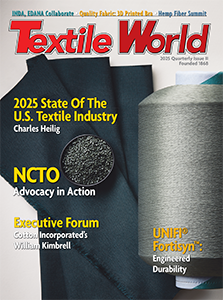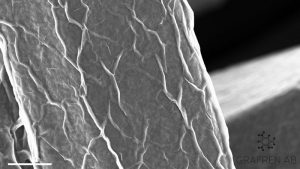 Graphene enabled e-textile for future human-machine interfaces
Graphene enabled e-textile for future human-machine interfaces
TW Special Report
Grafren AB, a Sweden-based chemical manufacturer and Associated Member of the Graphene Flagship, has been granted its first patent for a new method of separating graphene flakes. Here, Erik Khranovskyy, CEO of Grafren, explains how this pioneering technology could be used to turn simple textiles into smart, electronic products and interfaces.
Starting The Journey
Grafren is a manufacturer of smart textiles that specializes in producing graphene flakes and applying these to textiles and other products. The company was established in 2018 as a spin-off from nearby Linköping University, which is also a Graphene Flagship Associated Member. Its interest has always been in graphene flakes, because they are affordable and have a number of potential applications.
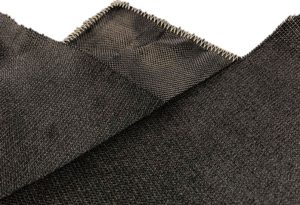 Grafen believe in the importance of the quality of graphene, which can make all the difference between a successful and failed demonstration of graphene-based materials. Having the right thickness of graphene is essential to benefit from its outstanding properties. But this is always a challenge with graphene flakes because the manufacturing method can result in flakes of different thicknesses and lateral sizes.
Grafen believe in the importance of the quality of graphene, which can make all the difference between a successful and failed demonstration of graphene-based materials. Having the right thickness of graphene is essential to benefit from its outstanding properties. But this is always a challenge with graphene flakes because the manufacturing method can result in flakes of different thicknesses and lateral sizes.
With smaller production volumes, filtering or centrifugation can separate flakes into fractions. Yet these methods are impractical for large volumes because they require a lot of energy and time investment. The post-synthesis treatment of dispersed flakes is one of the biggest obstacles to graphene becoming commercialized, because it has such a large impact on production costs.
 Tackling Problems
Tackling Problems
Grafren has developed an method to treat large volumes of graphene dispersions. This involves separating graphene flakes into different fractions based on their thickness and lateral size. The main benefit of this technology is that it allows the separation of thinner flakes from flakes that are thicker than ten atomic layers, and that include bulk inclusions and other contaminants.
This first patent is crucial for Grafren. One reason is that the method allows the preparation of water dispersions of single and double-layer flakes of graphene oxide and graphene. The thickness of the material is directly related to the flakes’ hardness and their bending ability.
Grafren’s method also uses gravity, and is based on the difference between the floatation and sedimentation speed of graphene and graphene oxide flakes in the liquid dispersion. Out method is also economically-viable for large-scale graphene production because it requires less energy and minimal labor.
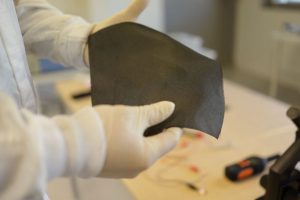 Current Projects
Current Projects
Thanks to this separation method, Grafren was able to obtain high-quality graphene flakes and work on its main product: electrically conductive textiles. The company developed an innovative way to incorporate graphene flakes into the depth of the fabric, wrapping every individual fiber and creating a conductive skin with controlled electrical conductivity. Grafren filed a patent for this invention in 2020, which is now pending. This will be the company’s second patent.
Meanwhile, Grafren is growing its product portfolio with a customer-centred approach, testing diverse textile materials and planning the scale-up. The size of fabric that may be manufactured is approximately 100 by 100 centimeters (cm) at present. Grafen aims to reach 180-cm-wide full roll-to-roll production by the end of 2021.
Crucially, Grafren can make any textile or fiberous material, even glass fibers, conductive. Conductive glass fibers are especially interesting for smart composite materials, and the company is talking with companies in a variety of sectors including healthcare, sport, aerospace, defense and gaming.
Unique By Nature
Grafen’s conductive fabric is unique. While it’s still made of fibers, each fiber is coated with the thinnest flakes. At the same time, it feels and behaves like any other fabric. It is soft, flexible, and air and moisture-permeable. Since Grafren’s conductive coating contains only water and graphene, it’s more environmentally-friendly. The company does not use binders. There is no glue or polymer to hold conductive components together inside the fabric. This is due to the distinctive properties of the graphene flakes, which wrap around the fibers and form the skin.
The fabric is extremely lightweight. In fact, as low as two grams of graphene loading per square meter of polyester fabric allow for a high resistance of 500 Ohm per square meter. This is an advantage over other materials, which require binders and are therefore hard, brittle and at least 10-times heavier.
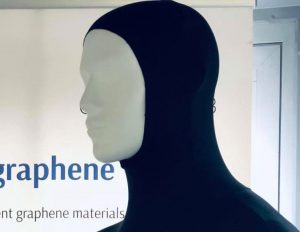 Human-Machine Interface
Human-Machine Interface
The Graphene Flagship unites world-leading researchers in graphene and layered materials. Dreaming big and aiming high, the group believes that collaboration is the only way to innovate. That is why Grafen already collaborating with several partners of the Graphene Flagship consortium.
Grafren has worked on the development of electrically-conductive fabrics that are based on graphene. But the next step is the opposite: insulation. Almost every application of conductive fabrics requires partial insulation of the conductive area. Since conduction is realized on an individual fiber basis, the same goes for insulation.
The possibility of applying a layered material with high insulation capabilities to the graphene-coated fibers, such as hexagonal boron nitride, is being explored. But applying the same coating technologies as already used on graphene, it may be possible to achieve multi-coatings on individual fibers. This can better preserve the textile structure with enhanced porosity and permeability. Practically speaking, Grafen could create a printed circuit board (PCB) that’s integrated into a piece of fabric.
Ultimately, the future concept Grafen is aiming to establish is a digital textile interface (DTI) for human-machine communication. The idea is to integrate invisible electrodes into conventional clothes, which will enable the permanent monitoring and stimulation of the human body by sensors or actuators.
The technology will be able to transfer signals to the human body — such as transcutaneous electrical nerve stimulation for pain control, heat or any other kind of stimulus. It could be used to monitor human health or motion through electrodermal, electrocardiogram and other sensors, and then pass this vital information on to a data processing or storage unit. For Grafren, its first patent is only the beginning.
Editor’s note: Funded by the European Commission, the Graphene Flagship aims to secure a major role for Europe in the ongoing technological revolution, helping to bring graphene innovation out of the lab and into commercial applications. The Graphene Flagship gathers nearly 170 academic and industrial partners from 22 countries, all exploring different aspects of graphene and related materials. Bringing diverse competencies together, the Graphene Flagship facilitates cooperation between its partners, accelerating the timeline for industry acceptance of graphene technologies. The European Commission’s FET Flagships enable research projects on an unprecedented scale. With 1 billion euro budgets, the Graphene Flagship, Human Brain Project and Quantum Flagship serve as technology accelerators, helping Europe to compete with other global markets in research and innovation. With an additional 20 million euro investment, the European Commission has now funded the creation of an experimental pilot line for graphene-based electronics, optoelectronics and sensors.
August 13, 2021

